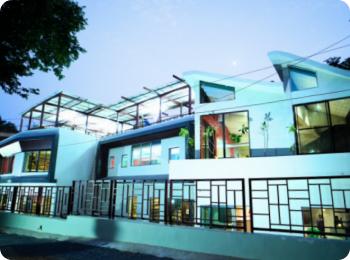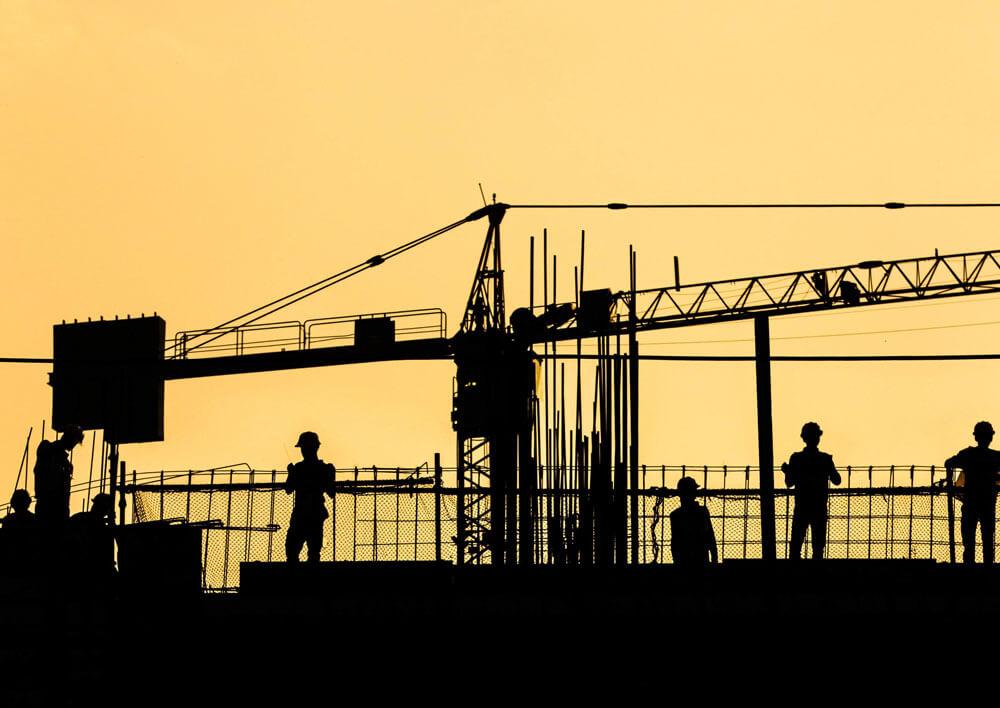The world is facing an unprecedented climate crisis, and buildings are one of the largest contributors to greenhouse gas emissions. India, the second-most populous country in the world, has seen a significant increase in the demand for buildings, with an estimated 70% of the buildings that will exist in India by 2030 yet to be built. However, India has also made significant commitments towards sustainability, with its goal of achieving net-zero emissions by 2070. The integration of AI and digitalization in the construction industry can significantly contribute to achieving these goals.
The Role of AI and Digitalization in Net-Zero Buildings
AI and digitalization have already revolutionized many industries, and the construction industry is no exception. AI and digitalization can help in the following ways:
- Energy Efficiency: Energy efficiency is a critical component of net-zero buildings. AI algorithms can monitor and optimize energy usage in buildings, thus reducing energy wastage and reducing energy costs. For instance, Google’s DeepMind used machine learning algorithms to optimize energy consumption in its data centers, reducing energy usage by 30%.
- Predictive Maintenance: AI can be used to predict potential issues with a building’s infrastructure, allowing for early intervention and maintenance. This can prevent downtime and reduce repair costs.
- Building Automation: Automation technology can be used to control and optimize various building systems such as lighting, heating, and ventilation. This can help reduce energy consumption and enhance occupant comfort.
- Waste Reduction: AI can be used to monitor and optimize waste management systems in buildings. This can help reduce the amount of waste generated and promote sustainable waste management practices.
- Improved Building Design: AI algorithms can analyze building designs and make recommendations to improve energy efficiency and sustainability. For example, the use of 3D modeling and simulation software can help optimize building designs and identify potential inefficiencies.
- Renewable Energy Integration: AI can be used to optimize the integration of renewable energy sources into buildings. For instance, AI algorithms can predict the amount of energy generated by solar panels and optimize energy storage systems.
Net-Zero Buildings in India
India is committed to achieving net-zero emissions by 2070. The country has already made significant progress in this regard, with the introduction of policies and initiatives to promote renewable energy and energy efficiency. However, the construction industry remains a significant contributor to greenhouse gas emissions. According to the International Energy Agency (IEA), buildings account for 36% of India’s total energy consumption. The implementation of net-zero buildings can significantly reduce this figure.
Integration of AI and Digitalization in Net-Zero Buildings in India
The integration of AI and digitalization in the construction industry is still in its early stages in India. However, there are some promising developments in this area. For example:
- The Government of India has launched the “Smart Cities Mission” to promote sustainable urban development. The mission includes the use of digital technologies such as IoT, AI, and Big Data to improve urban services and infrastructure.
- Indian companies are developing AI-based solutions for building automation and energy management. For instance, the Bangalore-based startup, SwitchOn, provides AI-based energy management solutions for commercial buildings.
- The use of Building Information Modeling (BIM) is gaining popularity in India. BIM is a digital representation of a building’s physical and functional characteristics. It can help optimize building design, reduce construction waste, and improve energy efficiency.
Case Studies from Around the World
Several countries have already implemented AI and digitalization in their construction industry, with impressive results. Some of these case studies are:
- Microsoft’s Redmond Campus in Washington: Microsoft used an AI-powered Energy Management System (EMS) to monitor and optimize energy usage in its buildings. The EMS used machine learning algorithms to predict energy demand and optimize energy supply. This resulted in a 47% reduction in energy usage and a cost savings of $1.5 million per year.
- The Edge in Amsterdam: The Edge is a net-zero office building in Amsterdam that uses AI and IoT technologies to optimize energy usage. The building has sensors that monitor occupancy, temperature, and light levels, which are used to adjust heating, cooling, and lighting systems automatically. The building uses 70% less energy than a typical office building.
- The Crystal in London: The Crystal is a net-zero building in London that uses a range of digital technologies to optimize energy usage and reduce its carbon footprint. The building uses an energy management system that integrates with its building management system to optimize energy usage. It also uses renewable energy sources such as solar and ground-source heat pumps.
- The Bullitt Center in Seattle: The Bullitt Center is a net-zero building in Seattle that uses a range of digital technologies to optimize energy usage and reduce its carbon footprint. The building uses a radiant heating and cooling system that uses the natural thermal properties of the building to maintain comfortable temperatures. It also has a solar panel array on its roof that generates all the electricity needed to power the building.
- The King Abdullah University of Science and Technology in Saudi Arabia: The King Abdullah University of Science and Technology (KAUST) is a net-zero campus in Saudi Arabia that uses a range of digital technologies to optimize energy usage. The campus uses a central energy management system that controls all the buildings on the campus, adjusting lighting, heating, and cooling based on occupancy and weather conditions. The campus also uses a seawater cooling system that uses the Red Sea as a heat sink to cool buildings.
The construction industry is a significant contributor to greenhouse gas emissions, and the integration of AI and digitalization can help reduce the industry’s carbon footprint. India, with its ambitious goal of achieving net-zero emissions by 2070, can benefit significantly from the integration of AI and digitalization in the construction industry. The use of AI and digital technologies can help optimize energy usage, improve building design, and promote sustainable waste management practices. While the implementation of these technologies is still in its early stages in India, there are promising developments in this area. The successful implementation of AI and digitalization in the construction industry can significantly contribute to achieving India’s net-zero emissions goal.







